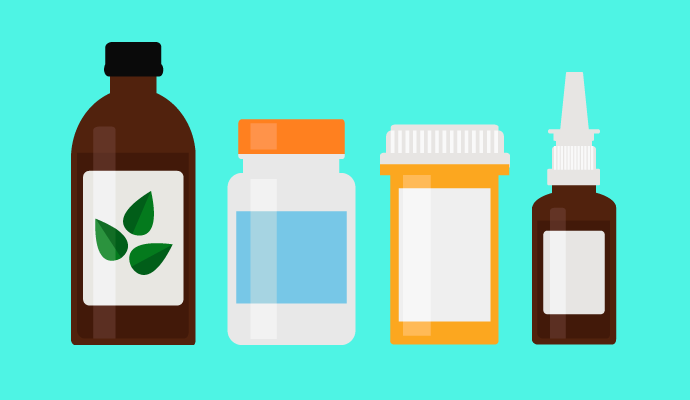Top 5 Life Sciences Companies by Pharmaceutical Sales
A diverse portfolio of drugs is enabling leading life sciences companies to generate tens of billions in revenue.

Source: Getty Images
- The pharmaceutical industry is inching closer to the $1.3 trillion mark, with future growth anticipated for life sciences companies worldwide.
According to the IQVIA Institute, the global pharmaceutical market will exceed $1.5 trillion by 2023, with the United States expected to experience four- to seven-percent growth over the next five years. The growth will come despite a loss of exclusivity rights in the US and cost-containment measures around the globe thanks to growth in new products and shift in pricing.
A closer look at the largest pharmaceutical companies by revenue show that they are experiencing more considerable growth from up-and-coming drugs and treatments. Even still, a sizeable portion of each’s revenue is tied to older drugs.
The following is a ranking of life sciences companies based on their pharmaceutical sales in 2018, pulled from annual reports. While Johnson & Johnson leads in terms of overall revenue, the conglomerate actually lags behind strictly pharmaceutical companies.
PFIZER
The multinational corporation specializing in drug research and development boasted $53.6 billion in revenue in 2018, likely to be bolstered in years to come following the acquisition of British pharmaceutical company GlaxoSmithKline last December. Prevnar 13, the company’s pneumococcal vaccine netted $5.80 billion in 2018. Meanwhile, its top five medicines combined for $16.8 billion in sales: Lyrica (epilepsy/nerve pain; $4.96 billion), Ibrance (breast cancer; $4.18 billion), Eliquis (anticoagulant; $3.43 billion), Enbrel (rheumatoid arthritis; $2.12 billion), and Lipitor (cholesterol; $2.06 billion).
ROCHE
The pharmaceutical division of the Swiss-based company saw seven-percent increase in revenue that totaled $44.0 billion in 2018, due in large part to sales of its multiple sclerosis and cancer medicines. The top drugs at Roche in 2018 were the slowest growers: Herceptin (breast cancer) and Avastin (colon, lung, brain tumors). The oncology drugs brough in revenue $6.98 billion and $6.84 billion at one-percent and three-percent, both respectively. Driving pharmaceutical in 2018 were breast cancer drug Perjeta ($2.77 billion; +27 percent), multiple sclerosis drug Ocrevus ($2.35 billion; +127 percent), and rheumatoid arthritis treatment Actemra ($2.16 billion; +12 percent).
NOVARTIS
Another Swiss pharmaceutical company posted a solid year in 2018. Novartis reported revenue of $51.9 billion, a five-percent increase over 2018. Key contributors to its financial growth were five medicines whose growth ranged from 24 percent to 102 percent. Topping the list was the psoriasis drug Cosentyx, which generated $2.83 billion (+36%). Two other drugs experience similar growth: bone marrow stimulant Promacta ($1.17 billion; +35%) and melanoma therapy Tafinlar + Mekinist ($1.15 billion; +31%). Heart failure drug Entresto posted remarkable growth of 102 percent, which equated to $1.02 billion in 2018 sales. Rounding out the company’s top-five medicines was myelofibrosis drug Jakavi ($977 million; +24%).
BAYER
The German pharmaceutical and life sciences giant credited a handful of its drugs with driving strong sales of $44.15 billion in 2018, with nearly half ($18.67 billion) coming from its pharmaceutical division. The anticoagulant Xarelto brought in $4.04 billion, a ten-percent improvement on the previous year. Next was Eylea, a treatment for macular degeneration that generated $2.34 billion in 2018 and represented 16.2-percent annual growth. The company’s top year-over-year increase came by way of Adempas, a therapy for pulmonary hypertension which posted a 20.7-percent increase over 2017 at $356 million. As for the chemotherapy treatment Stivargo, it generated $315 million in revenue but zero growth.
JOHNSON & JOHNSON
The American conglomerate reported pharmaceutical sales of $40.7 billion in 2018, a 12.4-percent increase over 2017. Remicade, its rheumatoid arthritis drug, netted $5.32 billion in sales followed by the psoriasis biologic Stelara at $5.15 billion. From its oncology division, chemotherapy drug Zytiga brought in $3.98 billion. Other significant revenue-generating drugs from the Johnson & Johnson portfolio include Imbruvica (chemotherapy, $2.65 billion), Xarelto (anticoagulant, $2.47 billion), Simponi (rheumatoid arthritis treatment, $2.08 billion), and Darzalex (myeloma therapy, $2.02 billion).
